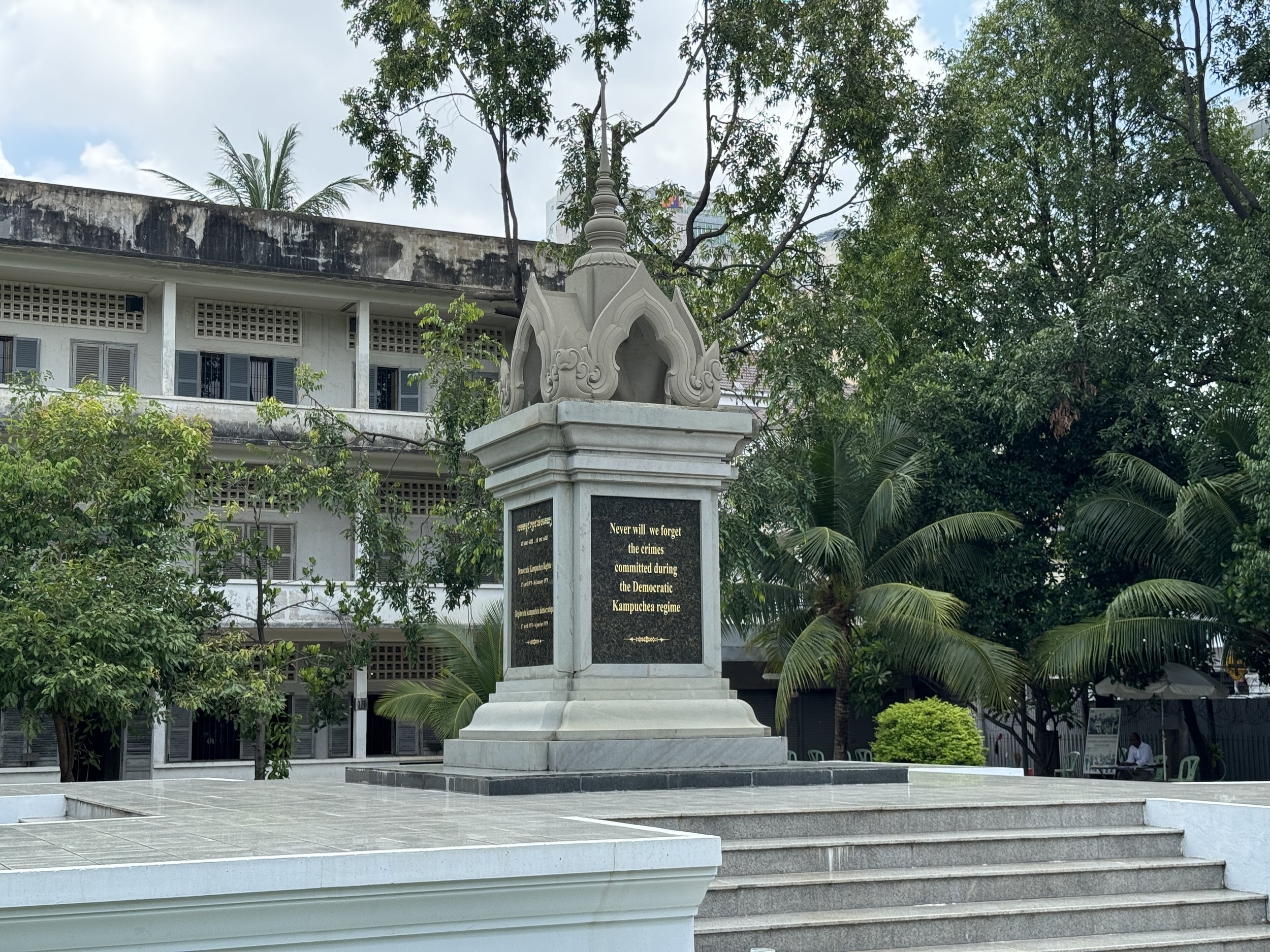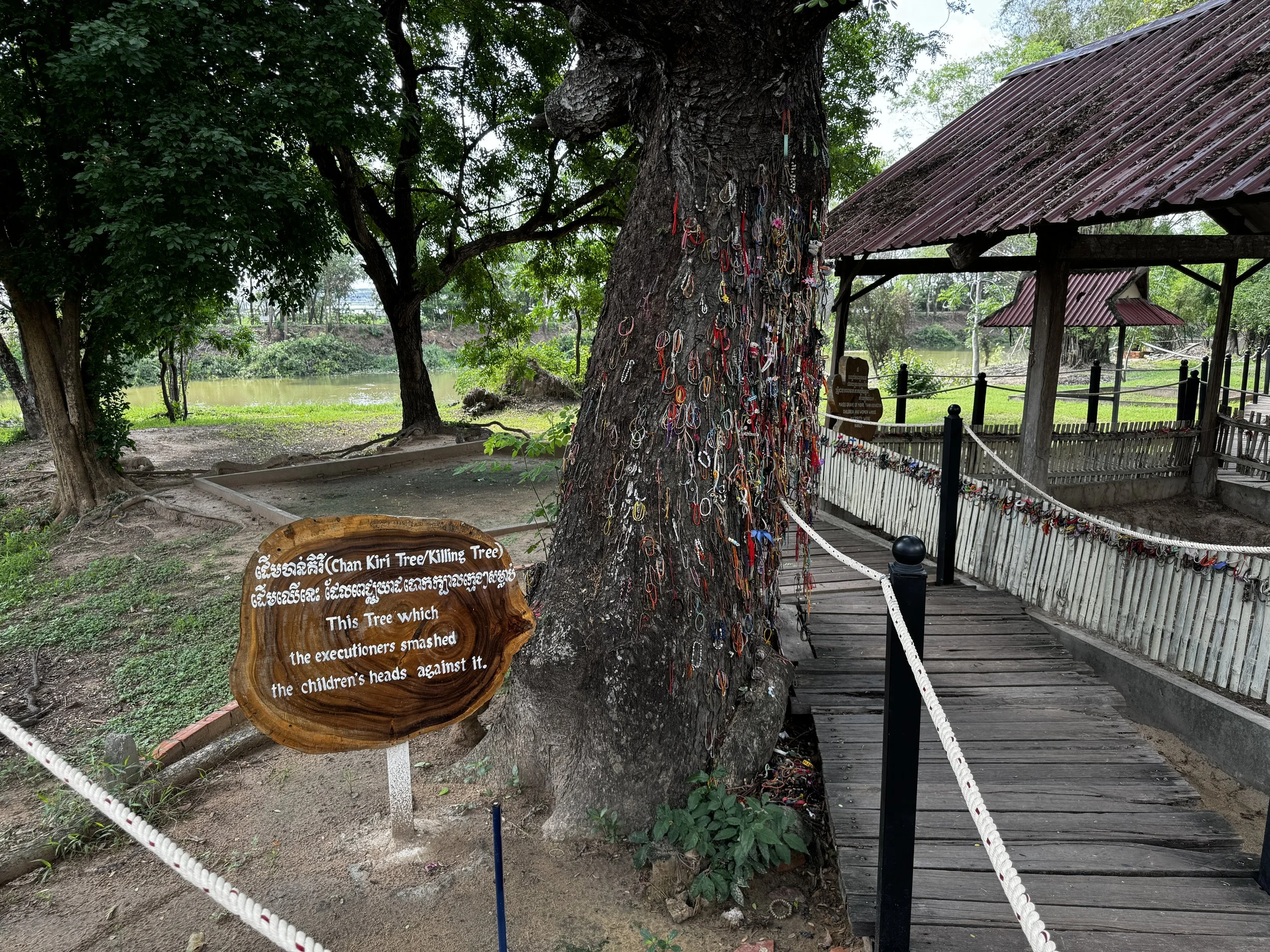June 30
The Genocide
The modern history of Cambodia is full of sadness and grief. As I was planning my journey through this country, I deliberately chose a path from darkness to light, hoping that it would echo my internal journey as well.
Starting in Phnom Penh, going to Battambang, and then onward to Siem Reap, I hoped to get a glimpse of how a people and culture survived the darkest moments in history and how it continues to attempt to thrive, and maybe return to the empowered way in which they created some of the most stunning architectural accomplishments for the sake of peace and enlightenment.
On April 17, 1975 the army of the Khmer Rouge, after years of internal civil war, toppled the capital city of Cambodia and the Government of the Republic of Cambodia. In a region that had seen years of colonialism and conflict, and been the playground for superpowers to fight proxy wars that they had no business pursuing, the overthrow of governments and changes to political machines was nothing new.
The Khmer Rouge took over as the official, sanctioned government of Cambodia, changed the country’s name to Democratic Kampuchea, and systematically killed 25% of the population of the country in a little over three years.
The scale of what happened is hard to fathom. If the equivalent happened in the US today, it would be the on the order of 80 Million people killed. That’s the entire population of the 200 largest cities in the US.
In Phnom Penh there are two remembrance sites related to the genocide. It’s really difficult to call them museums. They’re attempts by the Cambodian people to preserve evidence of the horrors that they endured and to be beacons of warning to the rest of the world that the unthinkable can and does become reality far too often.
The two sites are difficult to walk through. They’re graphic and pull no punches about what occurred. These are not censored, PG-Rated versions of what happened, but excruciating testimonials of the crimes committed at both the Choeung Ek killing field and the Tuol Sleng prison. But the Cambodians lived through it and the least we can do is listen and learn from their experience.
The Killing Tree at Choeung Ek
During the Khmer Rouge genocidal reign, they arrested and killed every member of the family of someone accused of a crime against the regime. That included children no matter what their age. Because the regime wanted to preserve ammunition, the vast majority of the more than one million executions were done by bludgeoning. Executioners at Cheong Ek grasped children by their feet and swung their heads against this tree until their skulls were fractured. Then they threw the bodies into the pit at the right in the picture.


